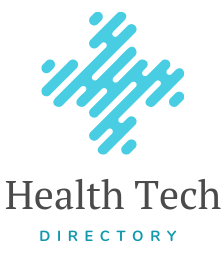Understanding Health Informatics Core Competencies - Part 2

Aligning Core Health Informatics Competencies
By Marisa L. Wilson, DNSc, MHSc, RN-BC, CPHIMS, FAMIA, FAAN, Associate Professor/ Interim Chair, University of Alabama at Birmingham; a HIMSS TIGER International Task Force Member
Our lives are spent interacting with technology and the data and information produced. The flow of our lives, both personal and professional, have been, and will continue to be, impacted by technology implementation. The changes that occur from the interactions of people, processes, technology and data can be supportive or destructive. Much of that divergence stems from how the technology and data are used. The move toward a supportive process requires users who are competent and ethical in the use of devices, information systems, data management and technology mediated interaction.
Banking, retail, communications, entertainment, education, and now healthcare, have all been transformed by technology implementations. What has not necessarily happened with the transformations, particularly in healthcare, is the positive optimization of those implementations. The healthcare organizational and operational changes needed to ensure technologies and data improve the interactions with patients and consumers has been diminished by often the lack of fully competent users. Full beneficial use requires proficient and competent point of care professionals. Moreover, healthcare systems are particularly risk adverse and the clinicians who interact with the patients and consumers require knowledgeable engagement in implementations to ensure minimal negative outcomes.
In addition, there is internal and external pressure for healthcare systems to improve and learn in order to make care more efficient, effective and satisfying all within the context of a technology rich environment. In order to accomplish these tasks and create that learning health system with the tools and processes available, healthcare students and current providers must be educated to utilize the tools to form data, information and knowledge to fuel the learning cycle within the system.
However, there is an issue. Healthcare providers often receive poor or nonexistent education in informatics and the use of information technology to advance care during their professional formation.
Competencies Needed
Nearly two decades ago, the Institute of Medicine produced five core competencies that all health professionals should possess regardless of discipline to meet the needs of the 21st century healthcare systems. They are:
- Apply quality improvement
- Employ evidence-based practice
- Provide patient centered care
- Utilize informatics
- Work in interdisciplinary teams
Each individual profession’s overseeing association has taken on the task of trying to lay out its professions expected informatics and IT competency set, to a more or less successful outcome. We will explore just three, starting with nursing which has the most defined list.
Nursing
The American Association of College of Nursing (AACN) took these competency expectations and incorporated them into the Essentials. In nursing education, expectations of nurse graduates at the bachelors, masters and doctoral levels delineate informatics and IT competent use as essentials. This set of essentials, however, date back to 2006 and are being re-envisioned to meet the needs of the industry today. Therefore, detailed specifics related to the measurable sub competencies will not be presented here.
However, what remains of these re-envisioned essentials will include informatics and IT as a key domain and a set of core competencies. Domain 8, Informatics and Healthcare Technologies, will contain actionable and measurable competency expectations for many graduates of U.S. nursing schools for which the school will be responsible to provide to the students. At this writing, the categories of competencies in Domain 8 fall into the following:
- Demonstrating the use of information and communication technologies and informatics processes to deliver safe nursing care to diverse populations in a variety of settings
- Understanding how the various information and communication technology tools used in the care of patients, communities, and populations
- Use information and communication technologies in accordance with ethical, legal, professional and regulatory standards, and workplace policies in the delivery of care
- Use information and communication technology to support chronicling of care and communication among providers, patients, and all system levels
Medicine
Physicians, like there nurse team members, will also need to interact competently with IT and informatics processes. Although no unified documentation on expected informatics competency for general medical education is available through the American Association of Medical Colleges (AAMC), the Accreditation Council for Graduate Medical Education (ACGME) does lay out the program requirements for fellowship in clinical informatics for graduates of ACGME accredited programs as also outlined through the American Medical Informatics Association (AMIA). For all medical education, a group from Oregon Health & Science University did document specific learning objectives and milestones to support developing informatics competent medical practitioners. These competencies were developed through a consensus agreement between the group of six faculty.
The team offered multiple competencies across the continuum of medical education. Among them are:
- Apply personalized/precision medicine
- Engage in quality measurement selection and improvement
- Engage patients to improve their health and care delivery through the use of personal health records and patient portals
- Find, search and apply knowledge-based information to patient care
- Maintain professionalism through the use of information and technology tools
- Participate in practice-based research
- Protect patient privacy and security
- Provide clinical care via telemedicine
- Use and guide implementation of clinical decision support
- Use health information exchange (HIE) to identify and access patient information across settings
- Use information technology to improve patient safety
Pharmacy
As with other interprofessional team members, pharmacists are also expected to demonstrate competency using IT and informatics processes to impact better outcomes. However, going back nearly a decade, it was noted that the education provided for the student to achieve competence, despite inclusion in Accreditation Council for Pharmacy Education Standards and Guidelines, as a requirement was found to be inconsistent. More recently, it appears that there is work to refine and revise those competencies.
The pharmacist informatics task force of the American Academy of Colleges of Pharmacy (AACP) used 11 sources and faculty feedback to create a revision. This revision lists the following domains with detailed, aligned competencies:
- Emerging Technologies
- Health Care and Clinical Biomedical Informatics
- Interoperability and Standardization
- Legal and Regulatory
- Patient Outcomes
- Practitioner Development and Education
A Gap
Those responsible for educating or training the students or current providers, despite mandates to do so, are themselves often lacking in knowledge, skills and attitudes so that there is not a transference of knowledge and skill that results in a demonstrable competency. As an example, the AACN reports that the average age of nursing faculty with a doctoral degree for positions of professor, associate professor and assistant professor were 62.4, 57.2, and 51.2 years.
These faculty members were most likely not educated about informatics during their own time in school and perhaps not even during clinical practices. This results in an informatics skill and competency gap among graduates. For nursing, this significant gap has been identified by the HIMSS TIGER (Technology Informatics Guiding Education Reform) initiative, the European Commission’s EU*US eHealth Work Project, and the Nursing Knowledge Big Data Science Education Work Group.
Substantiating the Gap
To substantiate and justify the size of the gap, the EU*US Work Project Consortium, funded by the European Commission’s Horizon 2020 innovation grant program, issued a survey to over 1,000 targeted respondents to measure the need, supply and trends that support necessary workforce skills and competencies. Over 1,000 responses were returned from 51 countries around the world. Respondents represented all of the healthcare professions involved in health IT and represented the full spectrum of the healthcare workforce.
A synthesis of results pointed to several major gaps related to training and skills, the top four address:
- Availability of courses and programs
- Lack of knowledge and skills of faculty and educators
- Lack of knowledge and skills of providers and caregivers
- Quality and quantity of training materials. Moreover, research identified the pressure placed on universities to deliver eHealth education in a curriculum wide approach for which the universities are struggling to meet the needs for applicable and novel learning opportunities.
Ursula Hübner with the University of Applied Sciences Osnabrück and Beth Elias with University of Scranton with TIGER share the strategic approaches to seamlessly delivering health informatics education HIMSS TV.
A Solution and Resources
Given the serious need to have health professionals and graduating health professional students competent in the provision of quality and safe care using IT and informatics processes, faculty and educators providing the knowledge, skills and attitudes on the topics must themselves be competent. Moreover, given that there are not enough health professionals with formal informatics education and training to take on this challenge, support must be provided to those who currently interact with the profession and the students.
TIGER International Competency Synthesis Project
The TIGER International Competency Synthesis Project’s Global Health Informatics Competency Recommendation Frameworks provide a comprehensive and compiled core set of international and interprofessional informatics competencies for nursing and other healthcare professionals.
Framework 1.0 is nursing centric and lays out two sets of core competency tables. In the first grouping, there are expected nursing informatics competencies that align with direct patient care, quality management, coordination, management and IT roles a nurse may hold. These competencies align with the AACN Essentials including the re-envisioned version. The second, more expanded set, align with all health professions across multiple levels. This expanded set contains four domains under which multiple competencies align:
- Biostatistics and technology
- Data, information and knowledge
- Information exchange and information sharing
- Management in informatics
Resources
As stated previously, despite all of this competency work and the expectations across various health professions, there is a significant gap. The gap is exacerbated by the knowledge, skills and attitudes of those currently teaching and educating. So, rigorous support and guidance has to be provided to those educators and faculty. There are tools to help, including the following.
Global Health Informatics Competency Recommendation Framework 1.0 (nursing) + 2.0 (interprofessional): This describes the framework with all the domains and competencies. A review of this document will demonstrate an alignment with the core informatics expectations of the AACN, AAMC, ACGME and AAPC.
Health IT Competencies Tool & Repository (HITComp): This web-based tool that lets you explore specific competencies, sub competencies across roles and education. It is aligned with the Global Health Informatics Competency Frameworks and serves as a detailed companion guide.
Interactive Education Demonstrator Modules: These modules provide instructional videos on the foundational curriculum, HITComp and cybersecurity focused on targeted malware attacks.
Skills Knowledge and Assessment Development Framework (SKAD) is a questionnaire focused on self-assessment to better understand personal digital literacy skills.
Today, more than ever, there is a major need to improve the informatics competency and skills of not only of the healthcare workforce but of those who teach and guide them. These tools offer an opportunity to address the gap in both areas.
Posts You’d Might Like

Understanding Health Informatics Core Competencies - Part 1
Global health informatics is a growing multidisciplinary field that deals in applications of technology to improve [global] healthcare systems and outcomes.

Understanding Health Informatics Core Competencies - Part 2
The move towards digital transformation in healthcare requires users who are competent and ethical in the use of devices, information systems, data management and technology mediated interaction.

Understanding Health Informatics Core Competencies - Part 3
The need for competent health informaticists and data scientists is growing exponentially. Additionally, the amount of data produced by the healthcare industry is expected to grow exponentially, creating opportunities a plenty in many areas.


Share Now